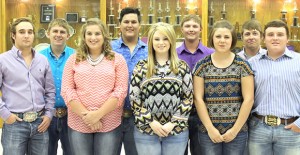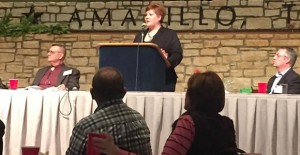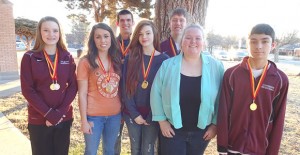Donley County continued negotiations this week on a tax abatement for the proposed Salt Fork II wind farm.
Cielo Wind Power representative Steve Brewster met with county commissioners during their regular meeting Monday, February 8, as both parties worked to finalize the deal.
County Judge John Howard told the Enterprise that the agreement is now in the hands of lawyers for final wording and he expects a deal will be formally approved at next month’s meeting of the commissioners.
“We are pleased to be working with Cielo again, and we view this as an opportunity to for progress in the county,” Howard said.
The Salt Fork Two project will be an expansion of the current project underway in the northwest corner of the county. According to previous reports, about 15 percent of the expansion will be in Donley County and will produce between 20 and 30 megawatts of wind-generated power in this county.
The judge declined to release specifics of the tax abatement agreement currently being negotiated but expressed satisfaction with the deal.
“We have terms favorable to the county and to them,” Howard said. “It’s a good deal for both parties.”
In other county business, commissioners approved the fiscal year 2015 audit as presented by Tracy Lambert of Foster & Lambert. Howard said revenues did not meet expectations for the fiscal year but that was offset by the county holding the line on expenses.
Commissioners also approved a proposal by Texas Panhandle CyberMedics for more than $3,000 to install additional security cameras at the Courthouse and Annex. The expense will be paid with the Courthouse Security Fund.
The court voted in favor of installing tankless water heaters in the offices of both justices of the peace and approved a proposal to install a pressure reducing valve on the Courthouse heating and cooling system by Bob Jay’s Heating & Air Conditioning.
Three bids on tax delinquent property at Howardwick from Gaylen L. Frederiksen and Judy Kay Renfro were approved as presented.





Reader Comments